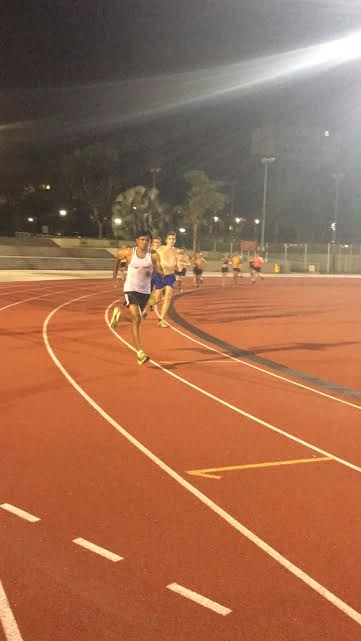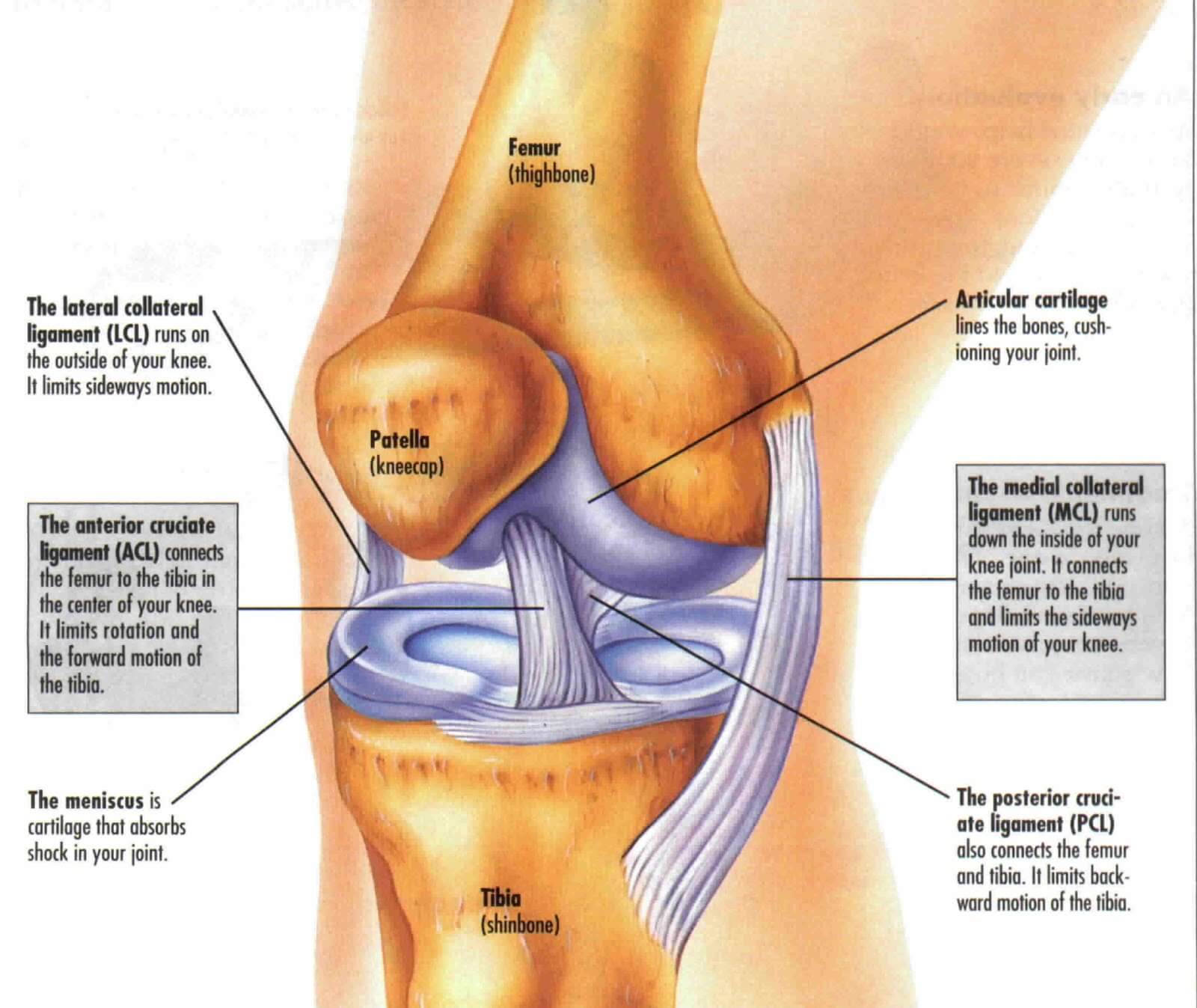Note:
If you are keen and have queries, please contact Coach Rameshon at 9100 4369 or you can email him at m.rameshon@gmail.com or swift.rameshon@gmail.com. Please refer to website http://flexifitness.com.sg (for more information on him and his programmes)
By Rameshon
Bsc (Hons) Degree in Physical Education, Loughborough University (1992-1994)
Masters in Education (University of Western Australia, 2005-2008)
Knee (Meniscus) Injury - By being active one saves on medical bills.
One
of the most common injury for one to see the doctor is on getting an injury. Whether you like it or not all will get knee problem now or later on whether you are in any profession. Hence, it is of paramount importance to know about this and be well informed. I saw a very interesting article.
This is an article posted on Facebook by a former
athlete of mine, Xu Pei Hua, who was and is an enthusiastic runner until now.
She is at present doing her PHD which is related to sports.
The article that she posted discusses on a knee injury,
which people believe that by running a lot, we get it more. Many believe that
there is wear and tear of the meniscus and ligaments are prevented by running
less.
A few years back, I remember an Australian lady
telling a male teenager on running triathlons, ultramarathon and marathon. She
told him that these people will suffer one day for doing all these pursuits. It
was thought-provoking. I did not answer back as I was not engaged in the
conversation.
In the year 2008, I came in first in Stanchart Marathon in
Singapore. However, in the year 2009, I got into meniscus problem, when I did an
MRI Scan. It was at the age of 46 that I got my knee injury. I researched many
articles and studies done on getting these types of injuries.
The topic that I was interested in who will
get injury first - is it active or the inactive. I found that the answers
were consistent all the time. It was found that many inactive people will face
knee problems earlier around the age of 40. The active people will get an injury
at the age of 45 onwards. It is puzzling but it is the truth.
However, my knee problems did not go until I start to
go for a course on Sri Sri Yoga where the postures were on breathing,
alignment, and they were related to all sports. (I was injured for about 2 1/2
years then). I went for other alternatives ways to solve my problems of the
knee. Some told me to take glucosamine tablets.
I did not take any tablets but I did the Sri Sri Yoga
exercises, which was important to running. In 6months time, miraculously I felt
that suddenly I could run without any kind of pain.
Then, I tried to run and I found that there was
absolutely no pain at all. I kept training in my running and was 6th for the
Mizuno Wave 10km run at Mt Faber, last year. About 5 to 6 weeks later, I ran
the Stanchart Marathon in Singapore and I became the first local veteran to do
a 3hr 10min and I was ranked 10th in the International category for male.
From then on until now, I have been doing these stretches and breathing technique to my runners too. I have not really
encountered any problems at the knee area from then onwards.
As for runners, who are reading this, I just want to
share a conversation I had with Ashley Liew's mother who departed a few years
back. She told me that she was worried for Ashley as she has heard about
meniscus wear and tear. I told her that the meniscus will wear and tear will
come much later than earlier as the muscles and bones will be stronger to
prevent injuries at the knee area. A strong muscle group in the body means
we are providing a good cushion for the knee and this enables the meniscus to
function better as a stabiliser and not something that is used to cushion the
impact of running, instead.
From here, we know from the story that I have told and
the article posted by Pei Hua in the Facebook that active people will lead a
healthier life and a happier life without much injuries when they are old as
compared to their inactive counterparts.
I have discussed this topic with Pei Hua recently and
I am happy that she is contributing an article to make people go out there
and exercise and to save on medical bills.
I am posting the article in my blog for the benefit of
everybody, namely the public and thank Pei Hua for her finding out this interesting article and post it in the Facebook.
First-Time Marathoners Don't Suffer Knee Damage
New MRI technology finds no cartilage loss in beginning marathoners.
Everyone and their grandmother seem to believe that running is bad for the joints, particularly the knees, even though a number of studies
have shown no evidence of increased knee problems among typical
runners. Today, the modern view holds that excess body weight and too
little exercise are the big culprits underlying knee and hip arthritis.
Still, old beliefs die hard, while new imaging technologies promise
better evidence of joint wear and tear. Then, there are special
populations, like first-time marathoners who build their training to get
ready for 26.2 miles. What would happen if you focus the new
technologies on this group, which is widely thought to have high injury
rates?
Research published in Knee Surgery, Sports Traumatology, Arthroscopy did
just that. And it produced results similar to those seen previously:
The runners' knees remained essentially unchanged by training for and
completing a first marathon. The authors conclude: “High-impact forces
during long-distance running are well tolerated even in marathon
beginners and do not lead to clinically relevant cartilage loss.”
The study included five men and five women who spent six months
training for a first marathon, and then completed it. They averaged 40
years of age, with an average BMI of 25.9, and had been running about 14
miles a week before beginning their marathon build-up. During marathon
training, they averaged about 20 miles a week for six months.
Researchers from Germany’s Freiburg University Hospital measured the
runners' cartilage volume and thickness before the training period, and
one day after the marathon. They used three-dimensional quantitative
MRI, a new and highly precise imaging technology, to look at the
runners’ femur, tibia, and knees. “This method allows detection of more
subtle changes in cartilage morphology compared to conventional MRI,”
the paper states.
The results revealed very small differences in the pre-training and post-marathon images. The differences judged were not meaningful.
The Freiburg team thought they might find greater cartilage thickness in the post-marathon images because low stress to the knee has been shown to reduce cartilage health. They wondered if high stress would have an opposite–and positive–effect.
It didn't. Because they observed only small cartilage changes, this hypothesis was not borne out. “Therefore, our study reinforces the assumption that cartilage cannot increase tissue mass as a result of mechanical stimulation,” the researchers write.
But neither does it harm the knee cartilage. The new study shows again that most runners need not worry about damaged joints. It appears
to be a case of “Use it, or lose it.”
Note:
By Narayanan
Rameshon has taught in Hwa Chong Institution, plus several schools, and Republic Polytechnic as well. He has won many accolades and he was awarded Merit Award for 1991 marathon performance in breaking the national record of Singapore, at that time. He has made 22 male athletes do a marathon in sub-3hrs. He has made 7 female runners do sub-4 hours for the marathon, as well. He was inducted to the ‘Roll of Honour’ by the then College of Physical Education, organised by Singapore Olympic Academy, in 1998, for breaking the National record repeatedly 4 times, till he did 2hr 24min 22sec).
He also has a Coaching group and he trains them on Tuesdays and Thursdays, 7pm at Botanic Gardens. Those interested can call him at 91004369 for coaching assistance, to improve performance. There is also personal training that he does for many in a week. You can e-mail him at swift.rameshon@gmail.com.










